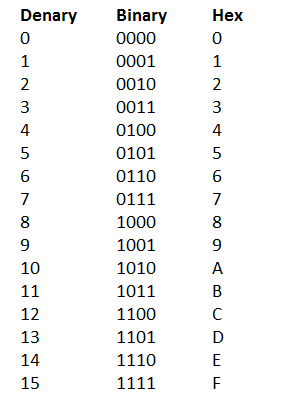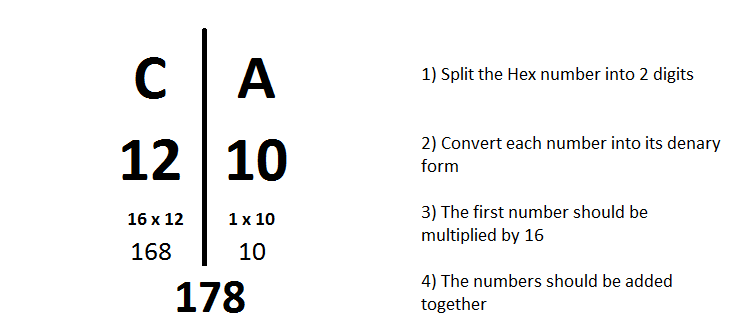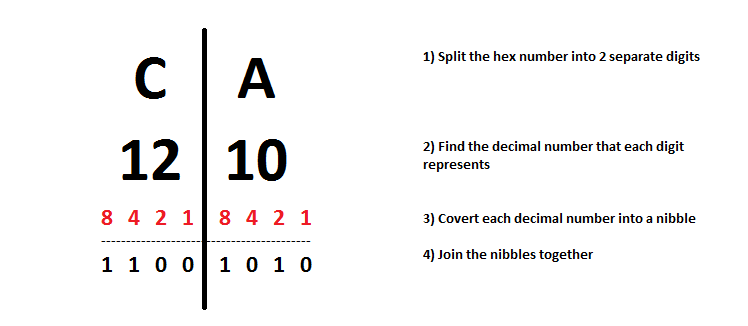 What is hexadecimal?
What is hexadecimal?
It is so easy to make mistakes when using binary, so hexadecimal was designed so that we could talk about the numbers more easily. 4 binary digits or a nibble can be represented by one hex number. 4 binary digits can represent the denary numbers 0 to 15. In order to represent these numbers using just one character, the letters A -F are used to represent the numbers 10 to 15.
Hex is not actually used by the computer, it is just for humans. For example, hex can be used to represent colour options – F3 C5 7E is much easier to say than 1111 0011 1100 0101 0111 1110 without making a mistake.
While denary is a base 10 number system and binary is base 2, hex is base 16.
Convert from Hex to Denary
You can also do the process in reverse to change from denary to hex. Using the same example as above, if we start with 178 and divide that by 16, we get 12 with a remainder of 10. Each of these simply need to be converted from denary to hex.
Convert from Hex to Binary
Again, you can do the reverse for changing binary to hex. First split the binary number into 2 nibbles. Change the nibbles into denary and find the appropriate hex digit for each denary number.